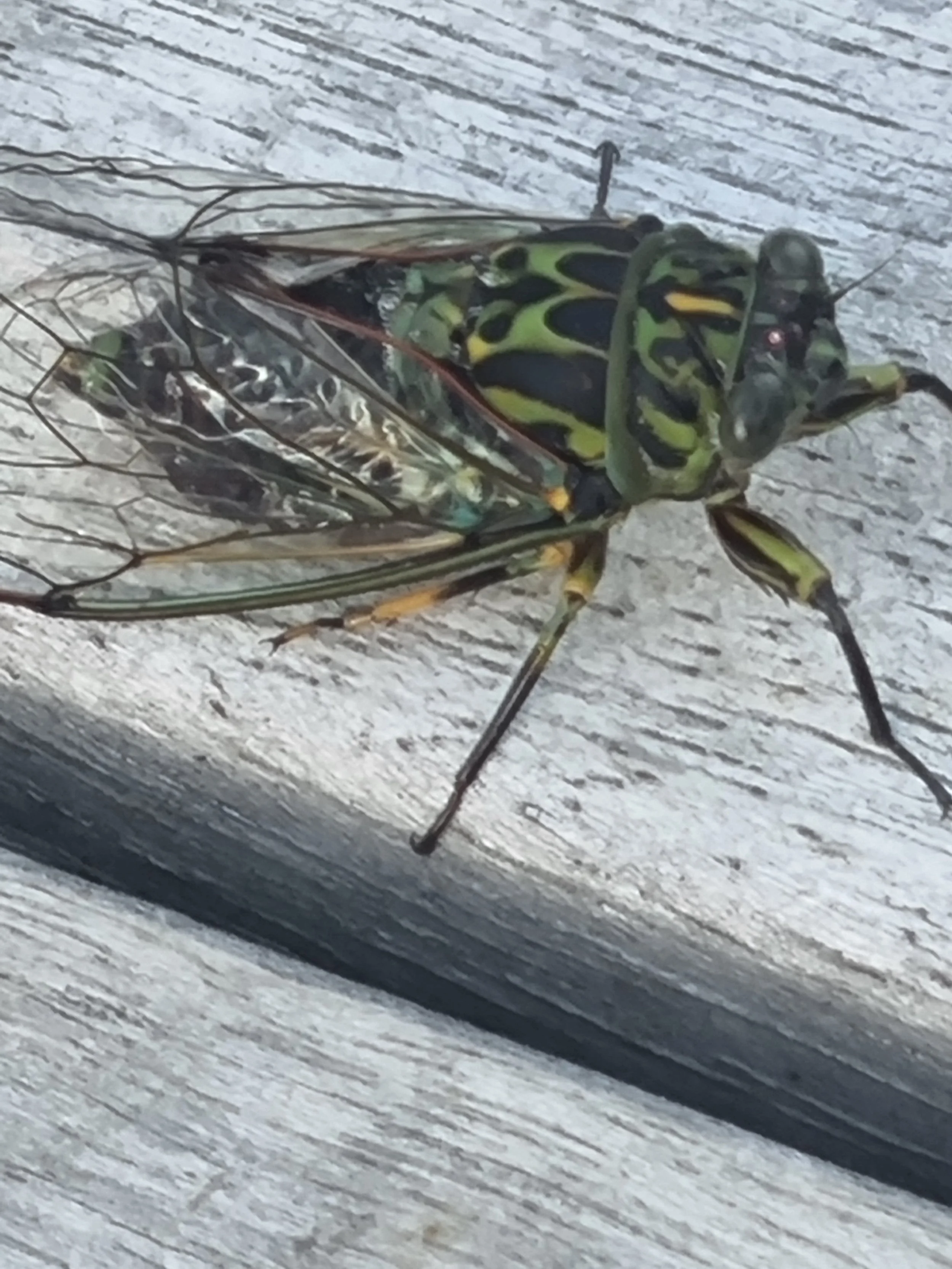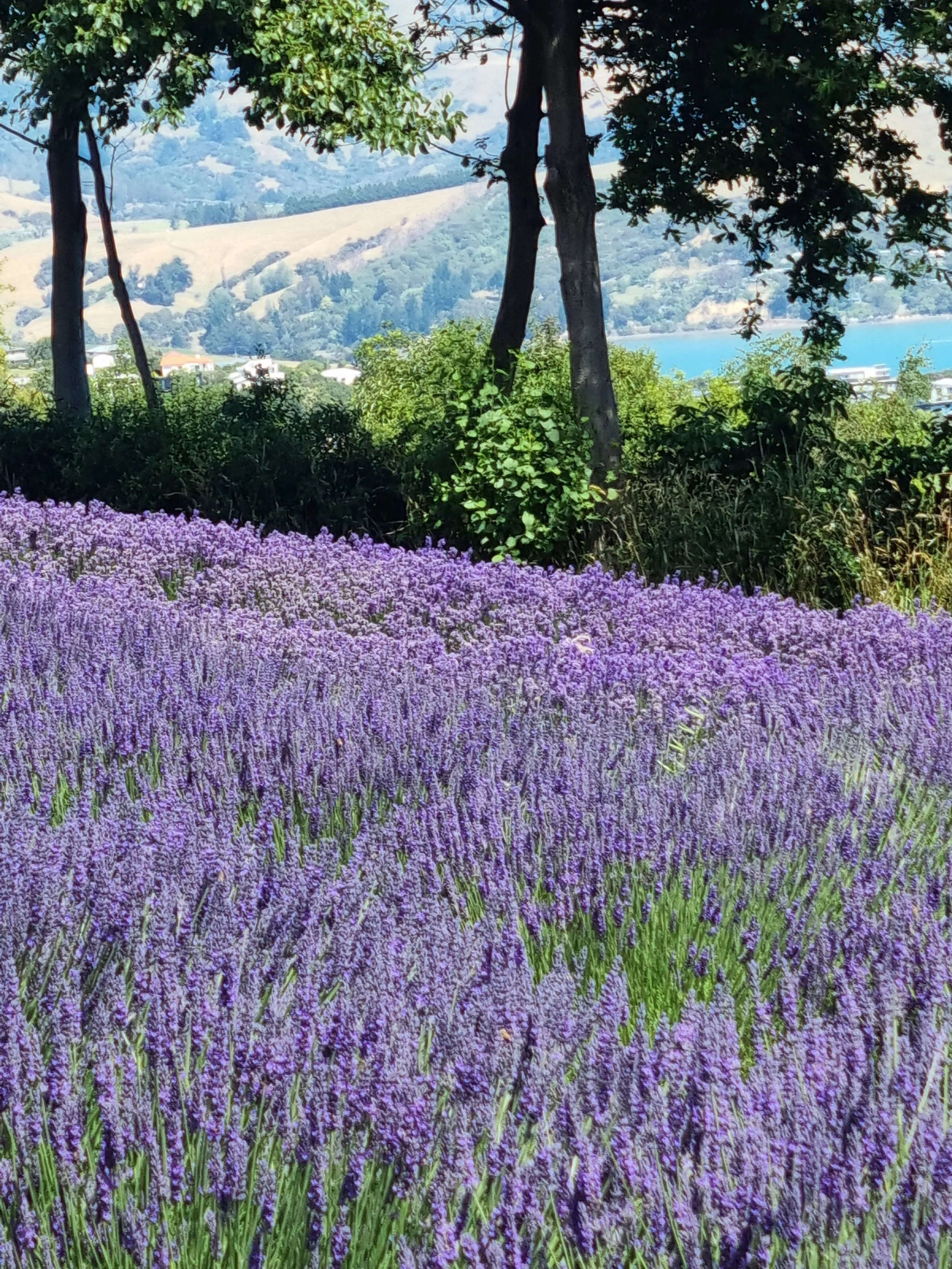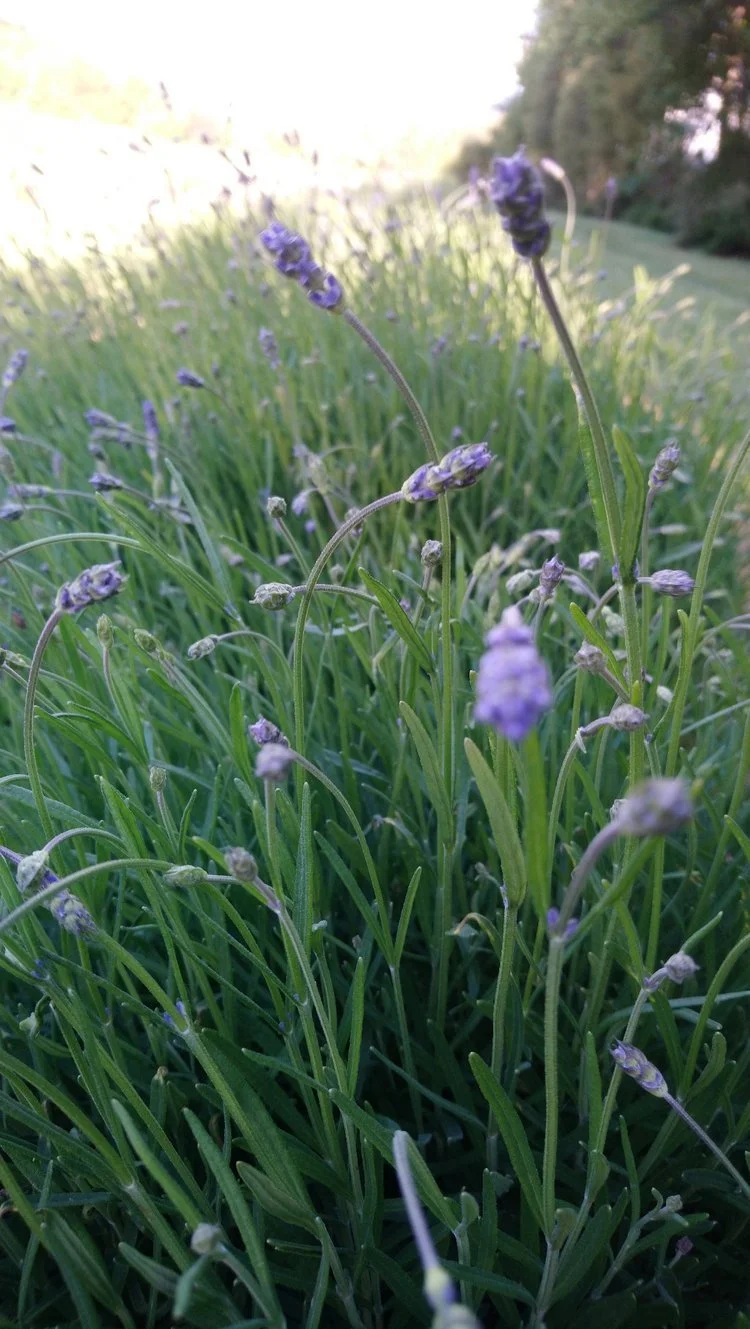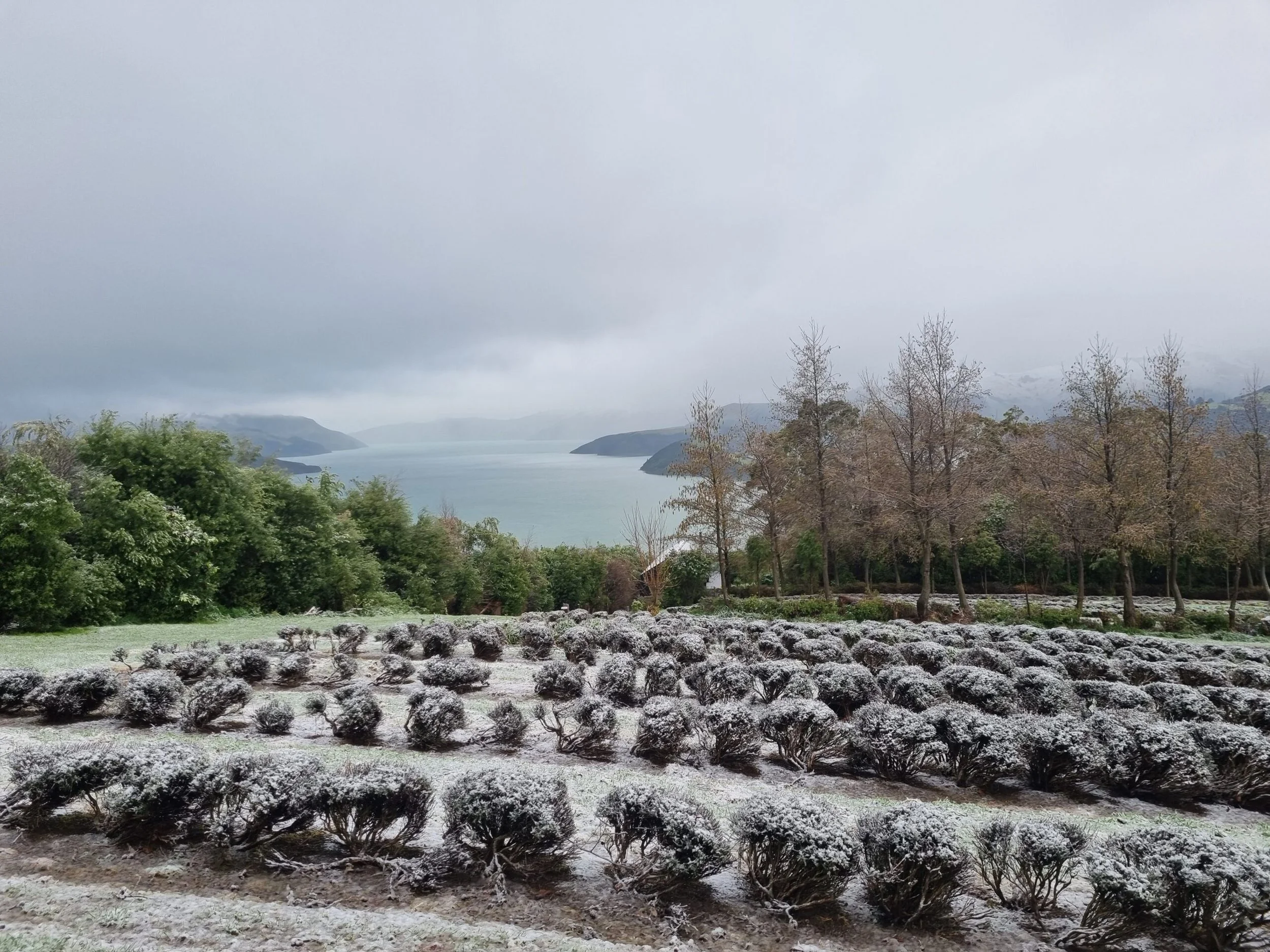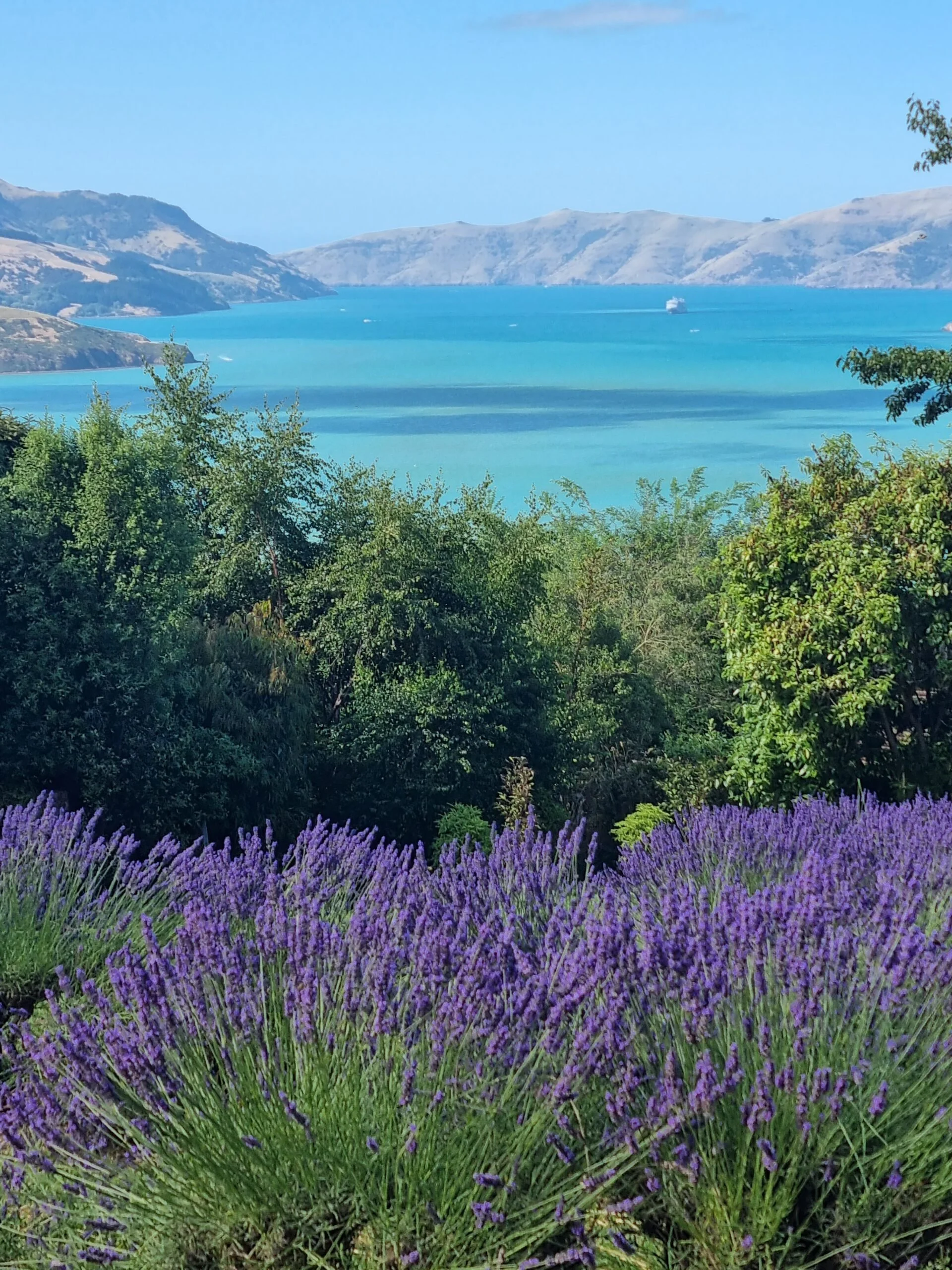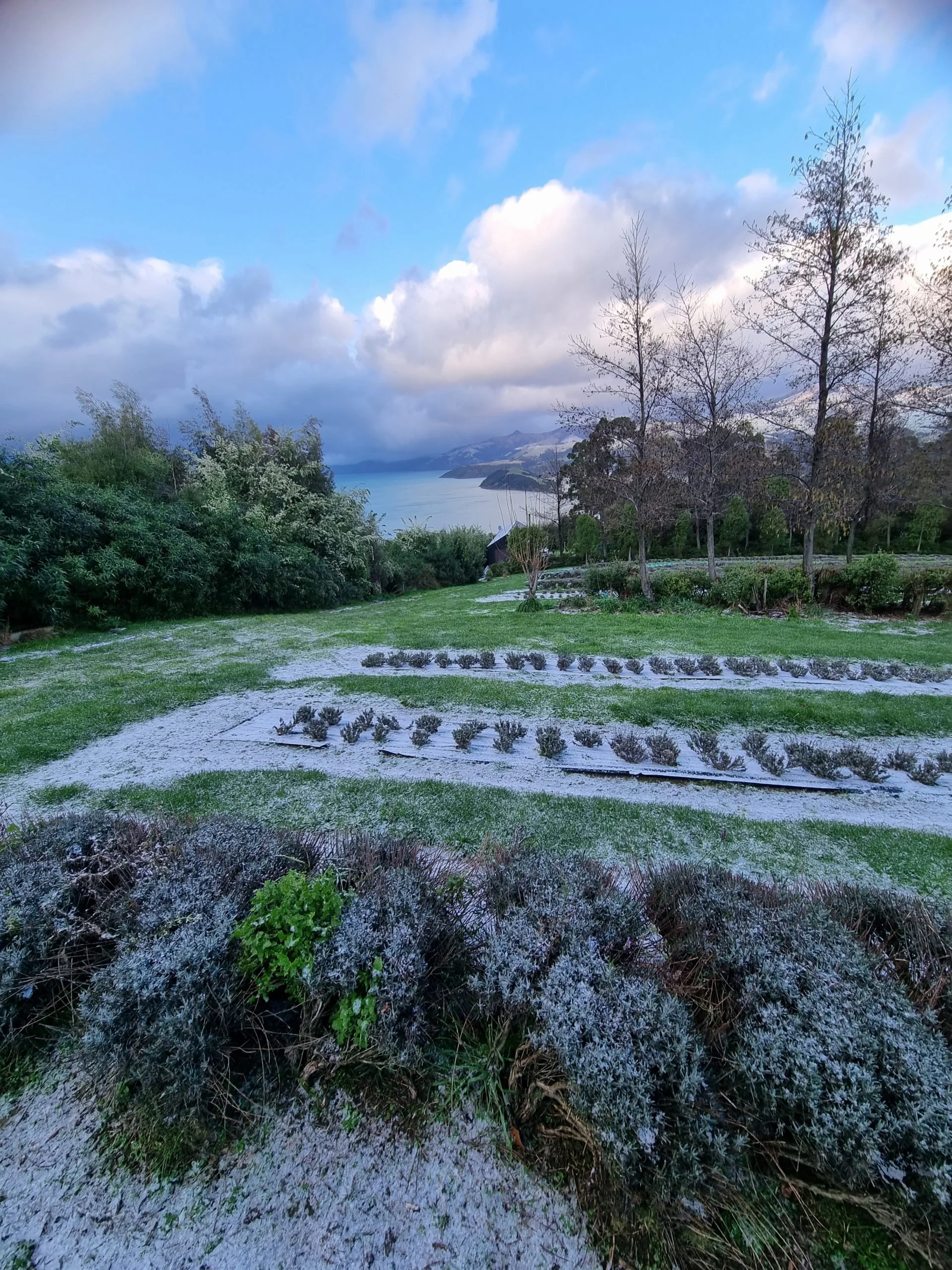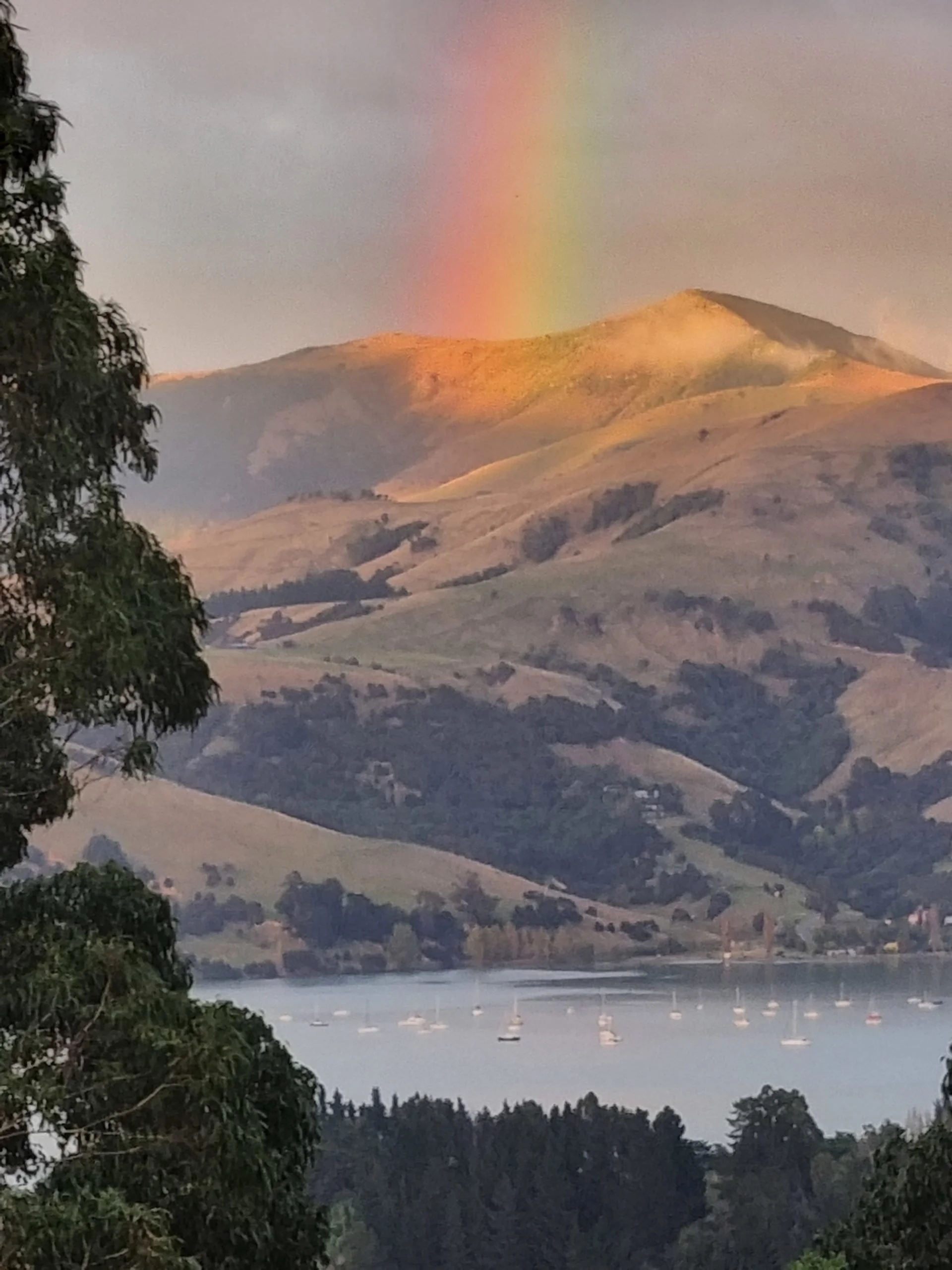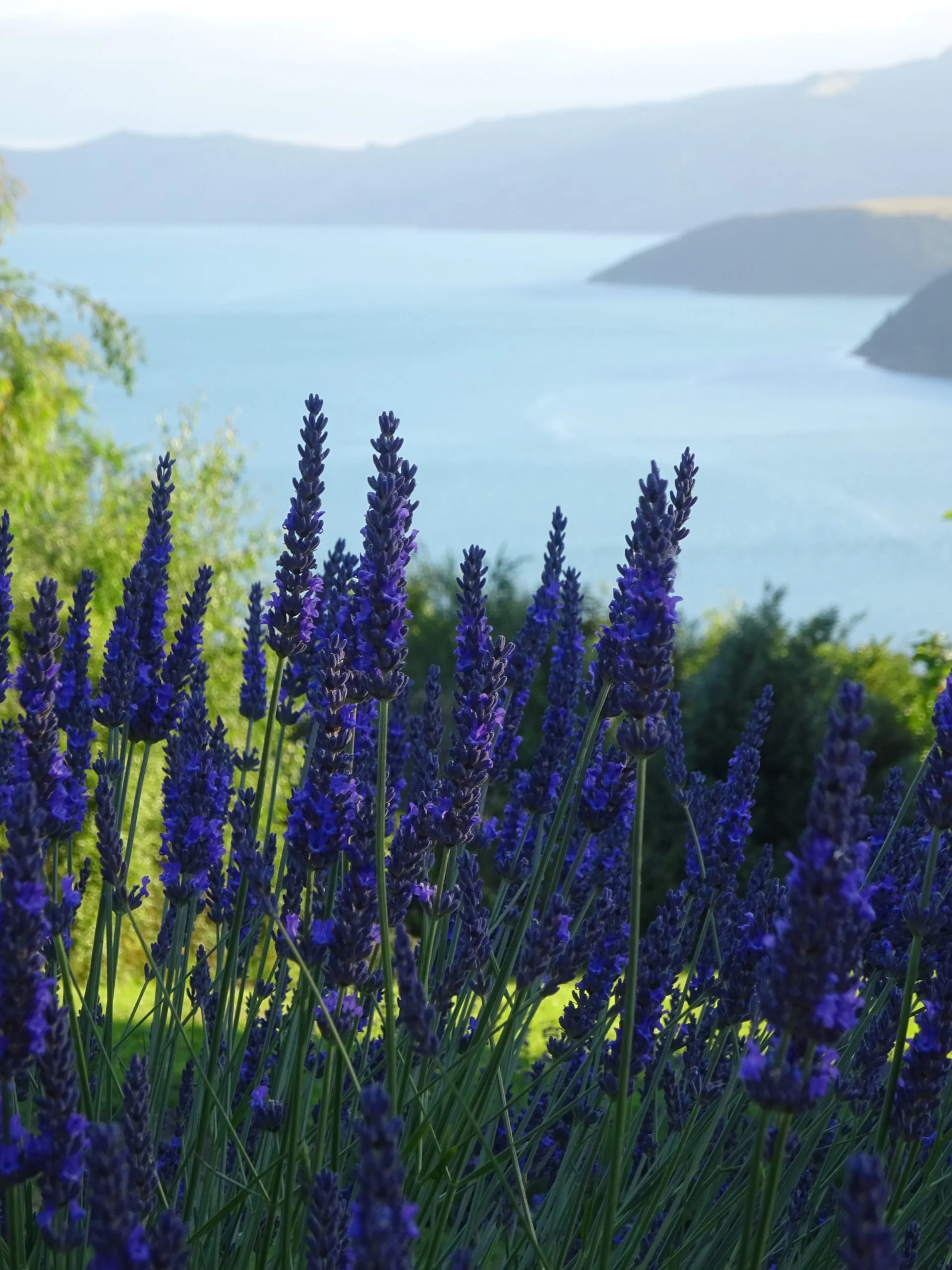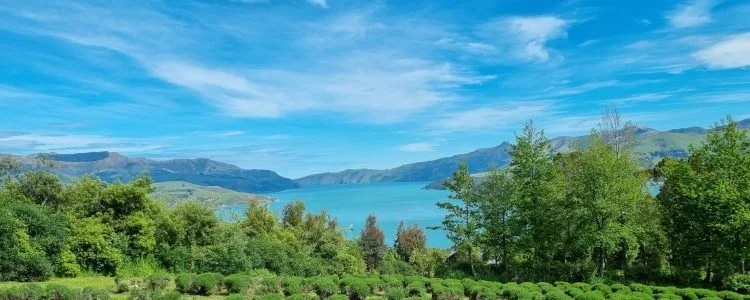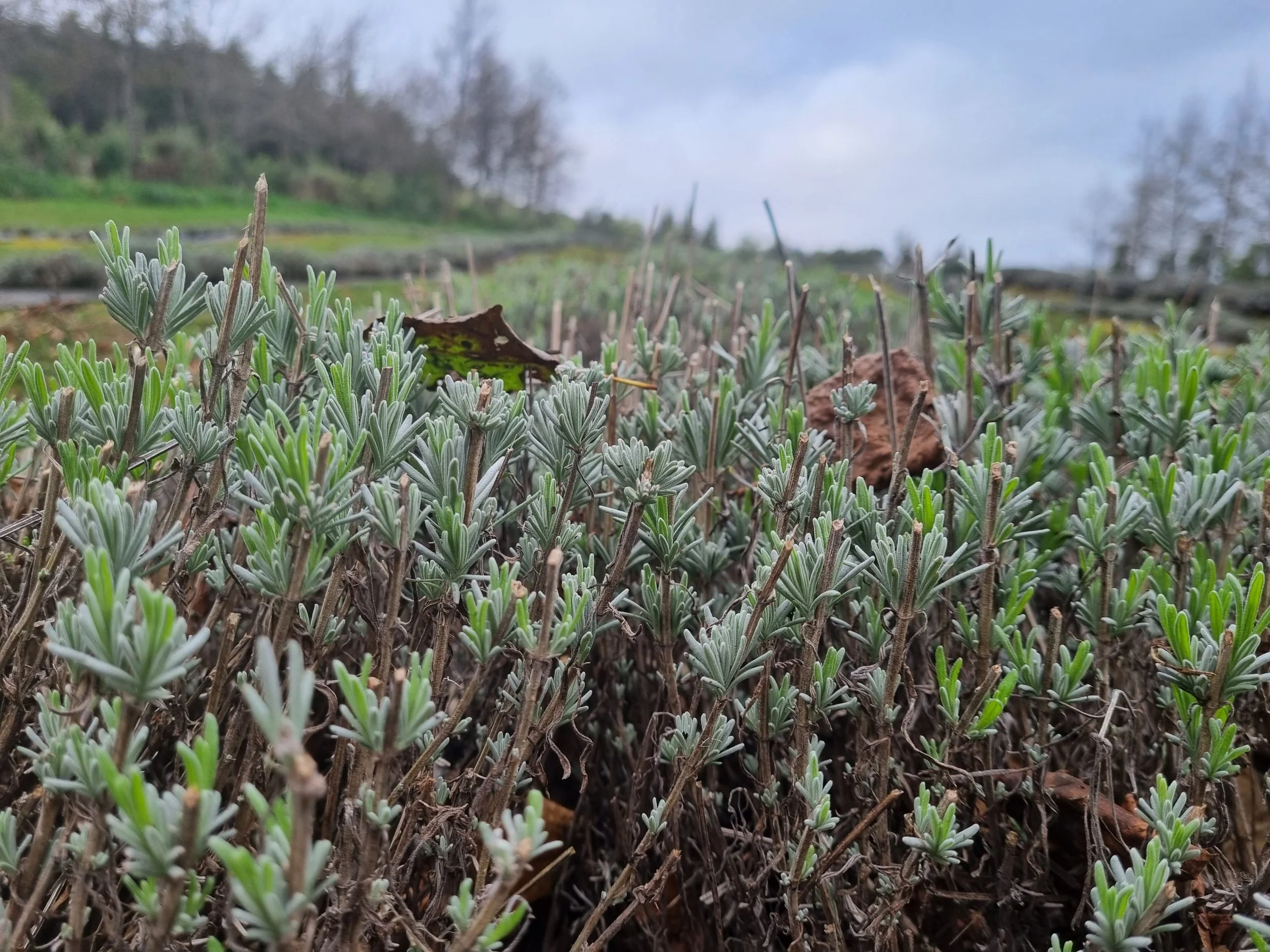
BLOG
Catching a wave…
Experience an unforgettable view, peace and solitude at Kūkupa Matairangi - lookout of the native pigeon.
Our new, purpose-built hut, high on the hills overlooking Akaroa Harbour, makes the most of stunning harbour views, privacy and the sounds of nature.
Kūkupa Matairangi sleeps two people in a Queen bed and opens in early October.
6000 shades of purple
Experience an unforgettable view, peace and solitude at Kūkupa Matairangi - lookout of the native pigeon.
Our new, purpose-built hut, high on the hills overlooking Akaroa Harbour, makes the most of stunning harbour views, privacy and the sounds of nature.
Kūkupa Matairangi sleeps two people in a Queen bed and opens in early October.
slow down, relax and breathe deeply…
Experience an unforgettable view, peace and solitude at Kūkupa Matairangi - lookout of the native pigeon.
Our new, purpose-built hut, high on the hills overlooking Akaroa Harbour, makes the most of stunning harbour views, privacy and the sounds of nature.
Kūkupa Matairangi sleeps two people in a Queen bed and opens in early October.
Kūkupa Matairangi
Experience an unforgettable view, peace and solitude at Kūkupa Matairangi - lookout of the native pigeon.
Our new, purpose-built hut, high on the hills overlooking Akaroa Harbour, makes the most of stunning harbour views, privacy and the sounds of nature.
Kūkupa Matairangi sleeps two people in a Queen bed and opens in early October.
Planting never stops…
Morena
The sound of silence has fallen over the forests surrounding our lavender fields.
This year's hot, dry summer has contributed to some ear-piercing and decibel-breaking calls from our summer cicadas.
The world's noisiest, cicada, has been clocked at almost 107 decibels, on par with your average rock concert. While Aotearoa/NZ isn’t home to the world’s loudest cicada, we do have over 40 different species.
Female cicadas don’t sing; it’s the male cicadas competing for a mate that grab our attention. These tiny musicians owe their ability to their tymbal, an organ made up of rib-like structures that, when buckled, makes a loud noise. Like a musical instrument, the cicada’s body is primarily hollow, amplifying this sound.
Adult cicadas only live above ground for about two to four weeks. Before this, they spend most of their lives underground in their nymph stage. Some of New Zealand’s longer-lived species will spend up to three years underground before they emerge in summer to look for a female.
Introduced pests, like the German wasp and the common wasp, threaten native cicadas. While they primarily feed on honeydew, wasps also enjoy snacking on cicada!
Everything else being equal, we can expect to lose the sound of silence with the return of cicadas next summer.
Ka kite
The sound of silence
Morena
The sound of silence has fallen over the forests surrounding our lavender fields.
This year's hot, dry summer has contributed to some ear-piercing and decibel-breaking calls from our summer cicadas.
The world's noisiest, cicada, has been clocked at almost 107 decibels, on par with your average rock concert. While Aotearoa/NZ isn’t home to the world’s loudest cicada, we do have over 40 different species.
Female cicadas don’t sing; it’s the male cicadas competing for a mate that grab our attention. These tiny musicians owe their ability to their tymbal, an organ made up of rib-like structures that, when buckled, makes a loud noise. Like a musical instrument, the cicada’s body is primarily hollow, amplifying this sound.
Adult cicadas only live above ground for about two to four weeks. Before this, they spend most of their lives underground in their nymph stage. Some of New Zealand’s longer-lived species will spend up to three years underground before they emerge in summer to look for a female.
Introduced pests, like the German wasp and the common wasp, threaten native cicadas. While they primarily feed on honeydew, wasps also enjoy snacking on cicada!
Everything else being equal, we can expect to lose the sound of silence with the return of cicadas next summer.
Ka kite
The darling buds of November
It is always exciting when the “darling buds” of November appear in our lavender fields.
Favourite Images
We wanted to share some of our favourite images from this year’s lavender crop.
Check them out on our facebook page.
Pacific Blue and Grosso produced well this summer, with the quantity up across both varieties and the quality of Pacific Blue, in particular, outstanding.
Spring “daze”
Spring “daze”, as in dazzle, are now well on their way.
Our lavender is quickly turning a light green colour as both Pacific Blue and Grosso adapt to longer days and warmer temperatures.
Beat the "winter blues"
As we approach the shortest day it’s a great opportunity to reflect on how we might beat the upcoming “winter blues”. We have continued to be busy out in the fields tilling and weeding. It is amazing how the grass continues to grow; even through the early periods of winter.
Science behind the scent
The science behind the scent of lavender has always been challenging. Many people can outline the benefits of lavender to them, but independently proving them can be challenging.
Later in this blog we highlight some new research that provides proof of the calming effects of lavender scent.
Heading into Autumn
The nights are cooler, the leaves are turning - we must be heading into Autumn.We completed our harvest of Gosso late in February, but still achieved a high yield and excellent quality.
This years oil will sit nicely in the fridge for a year or so as the aroma and notes change and shift.
Xin Nian Kuai Le - Happy New Year
Welcome to 2002 and the first week in February and to all our Chinese whanau Xin Nian Kuai Le!
It has been an amazing summer for our two varieties of Lavender. We harvested Pacific Blue in early January and obtained a fantastic yield and a fine quality aroma.
Hard working Atom
It is the first week in December, and we have had our hard working Atom tilling the edges of the rows of lavender. A great little machine, this beautifully chops up the weeds and makes it easier for our team of hand weeders to follow on behind.
The lavender fields are greener....
The lavender fields are greener....as we approach summer the lavender fields are plumping up and going green.
Our Pacific Blue has a very faint tinge of purple but Grosso remains stubbornly green.
First shoots of Spring
The first shoots of Spring have sprung across our fields of Pacific Blue and Grosso.
It has been a relatively mild winter and the lavender has come through some -3 degree frosts well.






